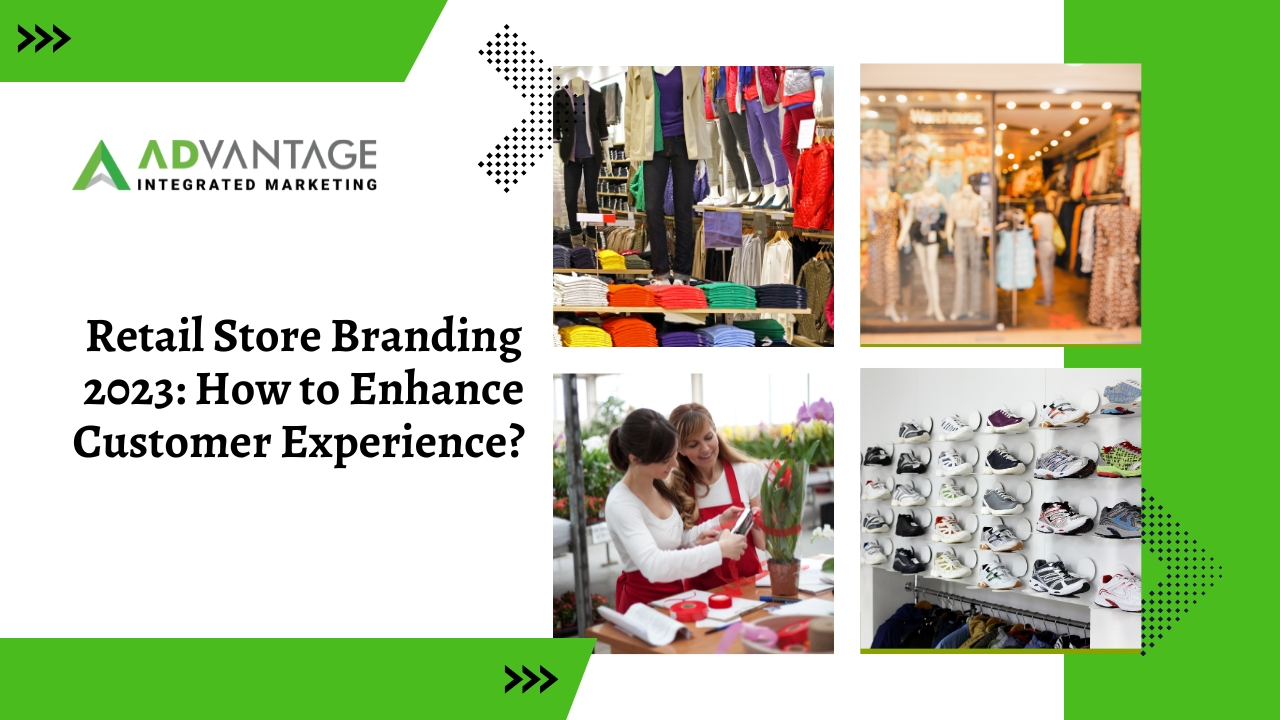What is the prime factor that keeps you a die heart fan of a brand? Right from the brand logo to the product ranges and customer services, everything keeps you stick to the brand, right? This is how retail store branding works in the modern marketing era.
Retail branding is no more just the quality of the product or its pricing, it’s more of the customer experience and loyalty. In a marketing world, where the customers have umpteen choices to pick a product, it’s very crucial to give them the best retail store branding and unique customer experiences. This will turn them as the brand ambassadors, speaking for the product.
Let’s now go into in store retail marketing and understand how to improve customer experience. Sailing through the blog, you will understand retail shop branding and the role of branding strategies in retail.
What is retail store branding?
Consider two retail businesses competing in the same city to sell the same range of products to the same target market. How can each business differentiate themselves to their customers? The only way is to bring out unique retail store branding strategies and stand out among the competitors.
How do you brand a retail store?
Successful retail branding may make your business stand out from the other businesses and draw more customers, which will boost your revenue. A customer’s familiarity with a brand or its products is referred to as brand awareness. Your company should stand out from the competition by being recognizable and memorable to your target market.
Let’s check out in a nutshell how to brand a retail store.
- Recognize trends and make adjustments
- Benefit from technology
- Rely on social proof
- Give a customised shopping experience top priority
- Go with a quality retail design
- Cultivate ties with customers
What is the importance of branding in retail stores?
Shopping is a joyful social endeavor, where customers find it a stress buster to feel better. Offering them a smooth shopping experience would rapidly turning into online sharing events that lead to additional indirect marketing.
Knowing your customers will help you build a relationship with them and your organization that will last longer than just a few interactions. You may utilize data to gain additional insight into your customers. Your business requires a clear message that entices in customers. Customers want to know what you have to offer them that no one else can, and this is how you can gain their trust and business.
You will be able to communicate with customers more effectively if you thoughtfully consider the audience you are targeting with each message. There is no better kind of marketing than the suggestions that your customers have for you. A wonderful in-store experience will always give them something to talk about. Great experiences will encourage customers to notify other people to share them, in addition to boosting loyalty.
Why to hike customer experience in retail store branding?
The primary goal of all retailers is to boost sales. When the retail environment is improved, both customer approach and avoidance behavior increase, which ultimately increases sales. If you focus on the right projects, customers will feel active and engaged with your brand community.
“Sensory retailing” is an expression used by researchers who study consumer satisfaction in connection to store ambiance. This has to do with how customers react to their surroundings and highlights the need of providing an inviting shop atmosphere to enhance customer experiences.
Retail Store Branding Strategies to Hike Customer Experience
Personalized and convenient shopping experiences are thought to increase consumer loyalty by 96% of retail businesses. There is no better kind of advertising than the recommendations your customers can offer you.
A delightful in-store experience will always give them something to talk about. Great experiences are going to motivate consumers to invite other individuals to partake in them, in addition to strengthening loyalty.
Offer Unique Customer Experience
Omnichannel is currently a fantastic alternative for retailers. The pandemic served as a significant motivator, forcing many businesses to develop a shopping experience that is omnichannel and begin selling online years earlier than they had anticipated. This kind of strategy enables businesses to be everywhere at once, which is crucial for pulling in customers.
Not every person must have the same experiences for them to be consistent. They must also be based on customized interactions in order to have a significant impact. Consider what your customers like and dislike so you can tailor their experiences. You may learn more about your customers and tailor your offerings by obtaining data concerning them through surveys, emails, and reviews.
Create long-lasting connections with your customers so they will return often because they will feel welcome and at home in your store. To achieve this, ensure that your store has defined values, that employees converse honestly, and that your marketing are genuine and relatable.
Train the Employees
Employees who are knowledgeable, educated, and trained are more self-assured and content with what they do. They have the skills and information necessary to succeed, thus they are confident in their abilities. Your customers will be able to tell that you are happy and confident.
Brands have to inspire employees while providing them the resources they need to successfully complete their jobs in order to provide the customers an authentic in-store experience. A fantastic place to start is by figuring out how to regularly educate employees on the front lines on the latest products, promotions, and company-wide operations.
Provide Seamless Purchasing Options
Your ultimate opportunity to make any extra last-minute sales is in the retail checkout area. Many retailers have point-of-sale displays stocked with impulse purchases that could help you increase your profit.
Your consumers’ checkout experience will stick with them and is frequently the component of their experience that will spread through word of mouth. If your clients have excessive wait times, followed by harsh checkout service, you can nearly guarantee they won’t return, and their friends and family will undoubtedly hear about it as well.
Convenience is crucial for retail customers, thus it’s critical that your products be categorized, signposted, and have clear, in-depth descriptions. For customers who are visiting your store for the first time and are not yet ready to register, a guest checkout option is ideal.
Make Use of Technology
95% businesses are using technology to enhance customer experiences. By establishing novel ideas and employing technology to deliver experiences that are centered on the needs of the customers, retailers are already pushing their game.
To enhance the in-store customer experience, retailers are testing a number of improved self-checkout technologies. The self-checkout idea, where customers scan and bag their own purchases as they exit the store is a smart idea. This technology increased consumer control while lowering merchant expenses.
Retailers must continue to identify the areas where their actual clients are located, plan out their routes, and then seamlessly integrate channels. Customers may find it simpler to see the inventory online, make a reservation for it, and finish their purchase in-person if there is a click-and-block option available.
RFID-tagged smart mirrors can potentially be used to enhance the client experience. Customers may demand new sizes, conveniently contact store assistants, identify coordinating accessories or items to complete the look using Smart Mirrors, which read RFID tags to provide customers with additional product information.
Go for Hyper-Personalization
Retailers must meet the demand for individualized experiences in light of customers’ expectations in order to not just stand out from other businesses but also to remain in business. By creating personalized approaches, you will give your customers a sense of independence by giving them the impression that you are speaking to them individually. It will make the customers feel that the product is developed specifically for them, and that they are the ones who are making the final decision.
Use of recommendation tools can help clients feel as though you understand their tastes, which can be a very effective strategy in this regard. When done correctly, personalization enables retailers to succeed rather than just survive.
Retail Store Design: It Matters
The physical encounter between a brand and a customer is the retail space, which serves as the ultimate presentation. There is more you may be doing, even if your consumers feel socially and physically relaxed in your store. Comfort is crucial and cannot be overlooked and it is achieved by stunning retail store design. It encircles them both physically and emotionally, and it provides a wonderful chance for connecting with customers on a personal level. Make an effort to keep this in mind when making any changes.
As with any other sector, certain aspects of the retail experience have changed as a result of shifting trends, but one of the most noticeable and significant areas remains the same.
Customers of today have greater expectations for the in-store experience. Shoppers now see the retail location as a place where they can get inspired, test out things, and converse with store employees who are real brand experts.
When offered to thousands of distinctive customers using private data, highly tailored customer experiences are challenging for competitors to replicate.








0 Comments